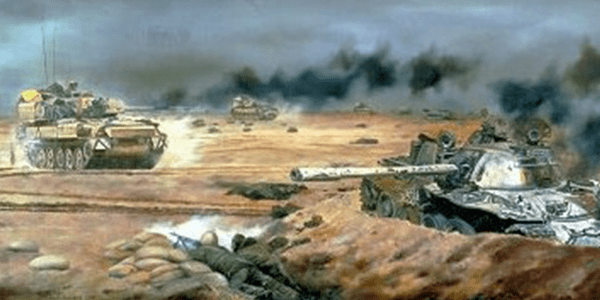16th/5th Lancers
The 16th and 5th Lancers were amalgamated in 1922 to form the 16th/5th Lancers.During the Second World War the regiment fought in North Africa and Italy. Later the 16th/5th became part of NATO’s front-line force in West Germany.
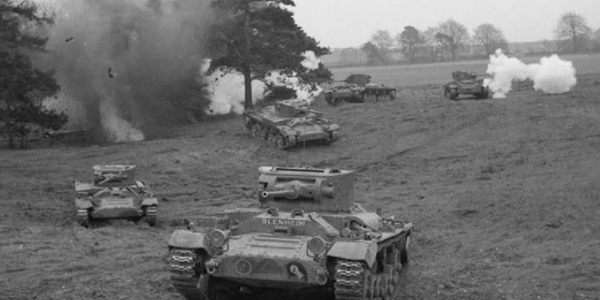
The Inter-War Years
Although the Great War marked the demise of the cavalry, the inter-war years still saw the new Regiment serving as cavalry in India, Egypt and Scotland. While in Risalpur, now Pakistan, the 16th/5th Lancers held their last mounted parade and handed over their horses before returning to England in January 1940.
On their return, the 16th/5th were brigaded with the 17th/21st Lancers and 2nd Lothian and Border Horse. This formation was to remain together throughout the Second World War. Initially designated the 1st Motor Machine Gun Brigade employed in anti-invasion duties in Kent and Essex, in November 1940 it was re-designated 26th Armoured Brigade, part of 6th Armoured Division.
Training on their new Valentine and Matilda tanks took place during 1941 and early 1942, before their deployment to North Africa.
The Second World War: North Africa 1942-1943
After the landings in Algeria, from November 1942 until spring 1943 the 16th/5th were campaigning in Tunisia, their objective being Tunis itself. Early in 1943 the Regiment received the new American Sherman tanks, a vast improvement on their old Valentines and Matildas, both in terms of firepower and protection. It was with these tanks that the Regiment fought in the battles of Kasserine, Fondouk, Bordj, Djebel, Kournine and the final battle for Tunis. After their hard-earned victory in North Africa the Brigade were withdrawn to reorganise, re-equip and rest in preparation for the invasion of Italy.
Message received from 26th Armoured Brigade in the Field, 13th May 1943: The Corps Commander sends his heartiest congratulations to all ranks in this Brigade and wishes them to know that it was largely due to their efforts that all the enemy both east of Tunis and opposite the 8th Army were either killed or captured.
The Second World War: Italy 1944
The Regiment landed in Naples in January 1944, at the outset of a sixteen gruelling months’ campaign in Italy. Unlike the North African desert, Italy was not ideal armoured country. On the whole it was very close and dotted with vineyards and olive groves, complemented by formidable mountain ranges. The Regiment’s record in Italy was most impressive: actions at Cassino in May 1944, fighting as dismounted infantry in the Apennine mountains outside Florence during the winter of 1944/45 and fighting in the final battle of The Po Valley. On 2nd May 1945, the German army in Italy surrendered, followed days later by the unconditional surrender of all enemy forces. The 16th/5th Lancers found themselves further west than any other regiment in the 8th Army, actually linking up with the American 5th Army. With peace came the awesome task of reconstruction. For this the Regiment became part of the occupation forces in Austria and Schleswig-Holstein, where they had to deal with the consequences that war had brought to this part of Europe and the unprecedented numbers of refugees.
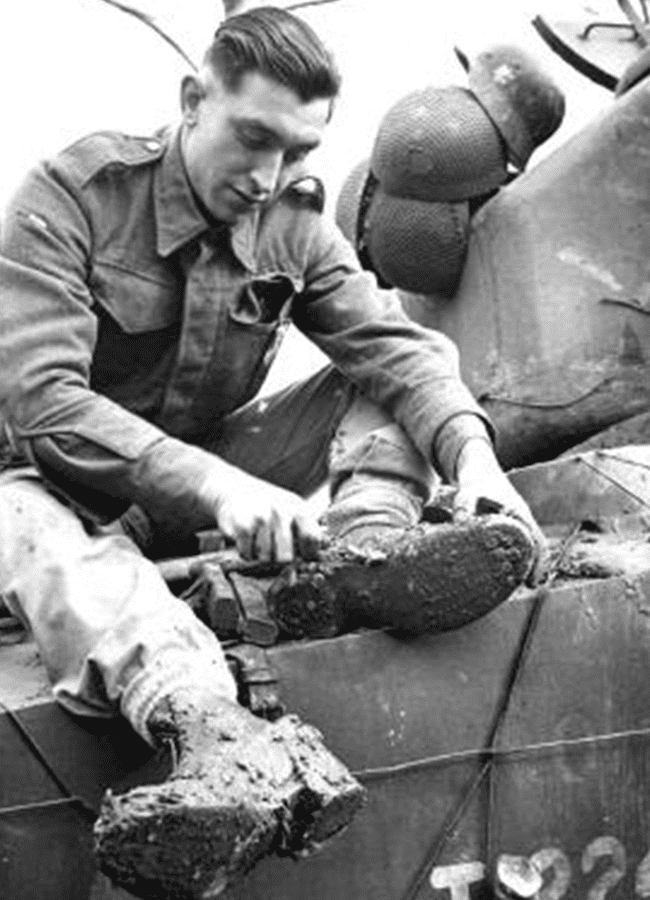
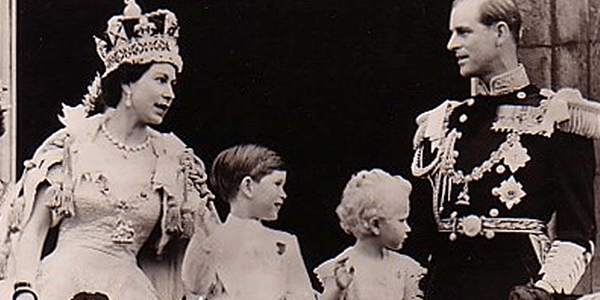
HRH Princess Elizabeth becomes Colonel-in-Chief 1947
In 1947 HRH Princess Elizabeth was appointed Colonel-in-Chief of the 16th/5th Lancers. Seven years later, on her accession to the throne, the Regiment was designated 16th/5th The Queen’s Royal Lancers.
To mark this the old 16th Lancers collar badge was replaced by the combined 16th Lancers ‘Queen Charlotte’s cypher’ and 5th Lancers ‘Irish harp’; this became known as The Queen’s Badge and was still worn by The Queen’s Royal Lancers as collar badges.
Second World War
The 16th/5th received Sherman tanks for the Battle of Fondouk in North Africa and the Italian campaign.
The Cold War
The 16th/5th patrolled the border between West and East Germany, and later deployed on United Nations peacekeeping duties.
Royal Regiment
In 1947 HRH Princess Elizabeth was appointed Colonel-in-Chief of the 16th/5th Lancers. After her coronation in 1953, the regiment was designated 16th/5th The Queen’s Royal Lancers.
Gulf War
On 25th February 1991 the 16th/5th Lancers led the way through the Iraqi defence line into Iraq.
Egypt 1948
Although the war was over and the Empire dramatically reduced in size, the 16th/5th Lancers continued its tradition of service abroad. In 1948, almost immediately after its return from Germany, the Regiment served overseas for five years in Egypt (Cyernaica and Tripolitania). This deployment was at a particularly sensitive time as the nationalist party in Egypt was gaining influence. This came to a head in 1952 with the overthrow of King Farouk by the republican nationalist Colonel Nasser, marking the beginning of the end of British influence in the Near East.
The Cold War 1953-1989: Aden, Bahrain, Hong Kong
From 1953 and for much of the next thirty five years, the Regiment was in the forefront of the Cold War, serving as part of the British Army of the Rhine (BAOR) in a variety of roles; at times patrolling the East-West German border, and always carrying out a vigorous training programme as an important part of the NATO deterrent against the communist Warsaw Pact countries of Eastern Europe led by the Soviet Union. The Cold War was finally won with the demise of communism symbolised by the fall of the Berlin wall in 1989. The Regiment was equipped with Centurion and later Chieftain tanks, and was the first regiment to deploy anti-tank guided missiles (Swingfire). In 1970 the Regiment won the coveted Canadian Army Trophy for NATO tank gunnery. The 16th/5th Lancers were the last British regiment to win this prize. This period was interspersed with tours of duty as a recruit training regiment and squadron deployments to Aden, Bahrain and Hong Kong.
Northern Ireland and Cyprus 1970s
In 1971 at the height of the ‘troubles’ in Northern Ireland, the 16th/5th took over the role of resident armoured car regiment from the 17th/21st. For eighteen months they were engaged in numerous routine and specific security operations, during which two 16th/5th Lancers were killed. Subsequently the Regiment did their share of emergency tours latterly as dismounted infantry.
Just as interesting and slightly more unique was the part the Regiment played in another sectarian conflict in Cyprus. In July 1974 the hostility between the Turkish and Greek Cypriots developed into open warfare when the Turks invaded the north of Cyprus. At the time B Squadron the 16th/5th Lancers were deployed in Cyprus as part of the British Sovereign Base. The Cyprus Emergency required the deployment of larger numbers of troops in order to maintain the security of British nationals resident on the island. To that end RHQ, A and HQ Squadrons 16th/5th Lancers were deployed to the island in order to facilitate the evacuation of British and foreign families from Nicosia and Famagusta to Sovereign Base Areas. To further complicate matters for the Regiment, once in theatre they were required to re-badge to United Nations forces. It was in this guise that they occupied Nicosia airport after which a tense stand off with the heavily armed Turks ensued. 16th/5th actions were conducted in such a professional and successful manner that the Regiment was praised for its action in Parliament on two separate occasions – something which had not occurred since the end of the Second World War.
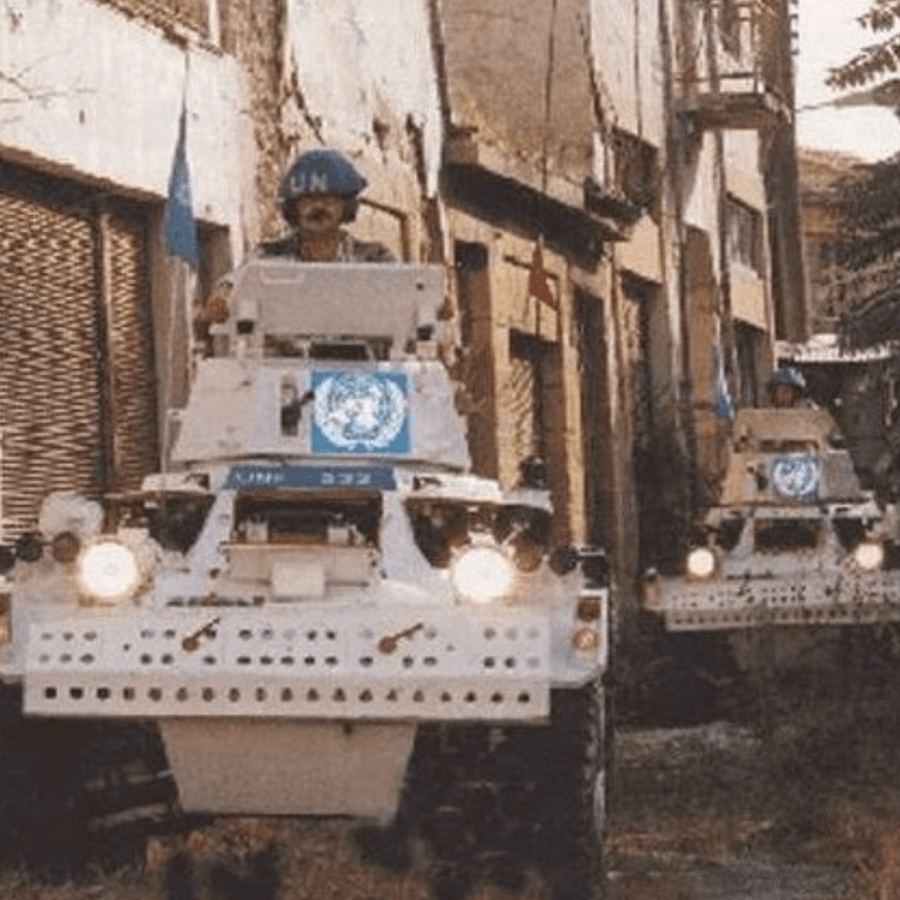
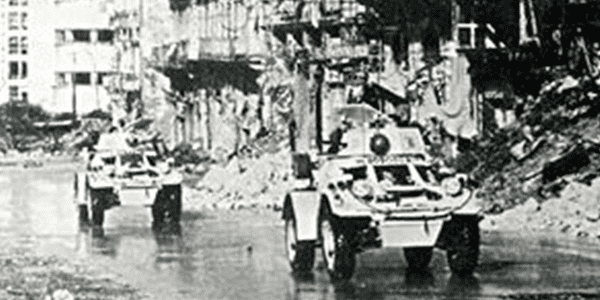
Beirut 1983
The Regiment found themselves working for the UN again in 1983. The conflict in the Middle East between the Arabs and Israelis had centred itself on Lebanon in the early 1980s. As a result the Israeli Army invaded and drove the Palestinian Liberation Organisation (PLO) out of the capital Beirut. Having achieved their goal the Israelis then also withdrew leaving a power vacuum in the war torn city. The UN decided to deploy a peacekeeping force of which A Squadron 16th/5th Lancers formed the British contingent. The mission was however doomed to failure, as the conditions did not exist for peace. The Squadron was withdrawn in February 1984 after only three months.
The Gulf War 1991
Seven years later the 16th/5th Lancer’s deployed to the Gulf War. In August 1990 Iraq invaded Kuwait. The invasion was universally condemned and UN Resolution 678 demanded their withdrawal by 15th January 1991; failure to do so would result in war. The Iraqis showed no intention of withdrawing and a coalition army was created in order to liberate Kuwait. The British contribution was 1st (UK) Armoured Division of which the 16th/5th provided the reconnaissance. On 25th February 1991, it led the way from Saudi Arabia, through the Iraqi defence line and on into Iraq. Subsequently entering Kuwait, it was only hours later ordered back into Iraq to provide security for the main logistic units following behind the armoured brigades. On 28th February a ceasefire was declared. The Regiment were then ordered to a position some forty miles northwest of Kuwait City.
After the end of the Cold War and victory in the Gulf, came peace and the inevitable call for reductions in military forces. ‘Options for Change’ was to result in a drastic reduction in the size of the Royal Armoured Corps – the 16th/5th Lancers was amalgamated with the 17th/21st Lancers, with whom they had been brigaded in the Second World War.
